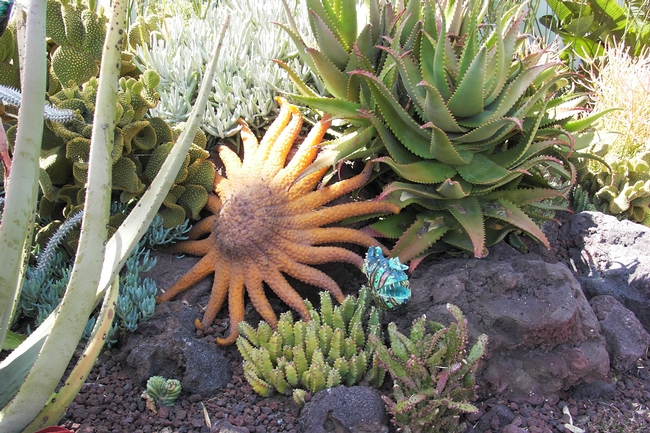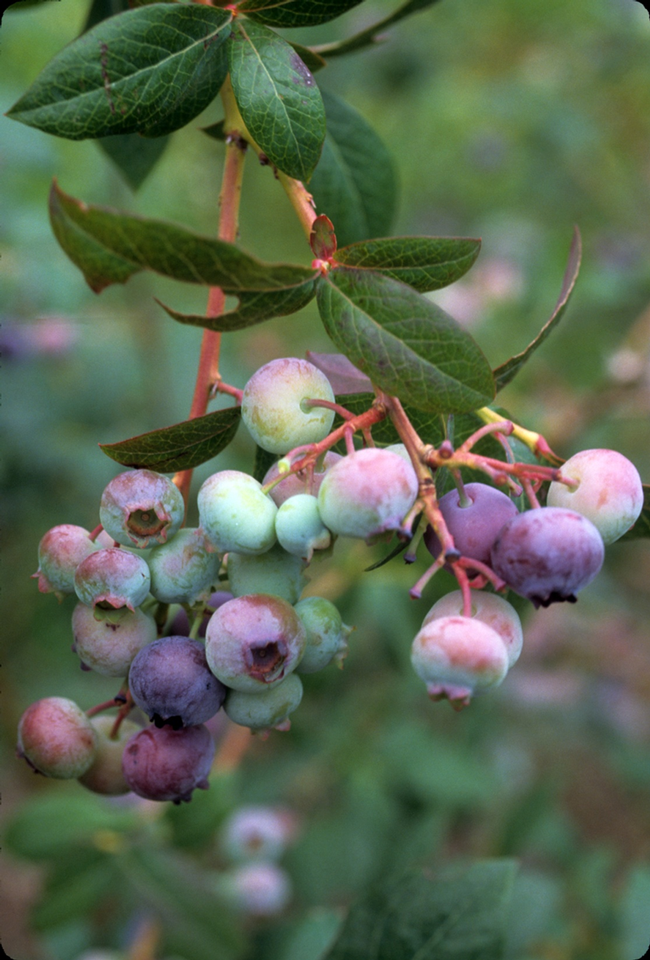Posts Tagged: Landscaping
Six steps to a sustainable landscape
Does a beautiful, low-maintenance, cost-saving landscape that actually improves the environment sound like a dream? If so, wake up, and welcome to the world of sustainable landscaping. Sustainable landscaping combines planning and maintenance practices for a low-waste, low-environmental impact garden space. Sustainable Landscaping in California: How to Conserve Resources and Beautify your Home Landscape, a new free publication by UC Agriculture and Natural Resources (ANR) demonstrates how creating a sustainable landscape is attainable.
Below are six easy steps, drawn from the recommendations in the 21-page publication, to illustrate the core practices in building the landscape of your dreams.
- Choose the right plant
Selecting appropriate landscaping plants for your climate zone is the first step in practicing sustainable landscaping. If you live in the California desert growing tropical plants is probably not the most practical choice for your landscape needs. Visit the California Garden Web to learn more about your climate zone, and find resources for choosing the right plants for your garden. - Water wisely
A typical California household uses one-third to one-half of its water intake in outdoor irrigation. How can a homeowner reduce water use? The answer is simple – water less. Overwatering an established landscape is more common than underwatering. Well-established plants should not be watered every day, reduce water use with a deeper, less frequent irrigation method. - Prevent pests (safely)
Put down the pesticide! Integrated Pest Management (IPM) offers solutions for managing insects, diseases, weeds and other organisms. IPM techniques include eliminating pest habitats, encouraging natural enemies (for example, ladybugs for an aphid infestation), hand-weeding and applying mulch to your landscape. Only use pesticides after all other options have been explored and in the smallest quantities possible. - Get to know (and love) your soil
Understanding what type of soil you have, its strengths and limitations is the first step toward a sustainable home landscape you can be proud of. Take steps to show your soil love and improve it with compost, mulch, and aeration as needed. To amend soil mix with compost evenly and deeply to avoid a layered effect that inhibits proper plant growth. - Welcome wildlife
For a landscape to be truly sustainable it should provide a balanced ecosystem for a variety of plants and wildlife. Roll out the welcome mat in your landscape for birds, butterflies and other wildlife by providing access to food, water, and shelter. - Conserve energy
Conserving energy in your landscape is easy. Retire power-tools and use hands tools like a shovel, rake or broom. Install light-emitting diodes (LED) lighting, which requires less energy to operate and lasts longer than traditional bulbs. Reduce energy use in your home by planting a shade tree which helps keep the home cooler during hot summer months.
The University of California Master Gardener Program extends to the public UC research-based information about home horticulture, sustainable landscaping and pest management. In exchange for the training and materials received from the University of California, Master Gardeners perform volunteer services in a myriad of venues. If you are interested in becoming a certified UC Master Gardener contact a local UC Cooperative Extension office in your county.
How to design your landscape and eat it, too
Edible landscapes are growing like zucchini in the sun as more people recognize the health and economic benefits of designing their yards with pretty plants that taste good, too.
“Sales of fruits and vegetables have remained strong, even during this recession when sales of other plants have lagged,” said Ron Hoffman, owner of Morris Nursery in Riverbank,Calif., echoing the sentiments of many in the state’s nursery industry. “People enjoy growing their own produce and they want plants that do double duty.”
And when they choose brightly colored edibles — like, say, Neon Lights swiss chard or Bronze lettuce — they can have their landscape and eat it, too. But designing and maintaining an edible landscape is easier said than done. How do you know what plants to choose? What if one plant needs different soil and more water than its neighbor? How do you keep the cat from pooping on your produce?
The folks at the UC Cooperative Extension Master Gardener Program, with assistance from the California Center for Urban Horticulture at UC Davis, are answering those questions and many more at six, two-day, “train the trainer” workshops throughout the state. Funded by a two-year grant from the UC Agriculture and Natural Resources, the program teaches the art and science of edible landscaping to master gardeners who, in turn, will help train the rest of us.
“Before you install an edible landscape, you need to assess the site and the user,” said Missy Gable, program manager for the California Center for Urban Horticulture. “How much time do you have to devote to gardening? What are your harvest needs? We brought together experts from diverse fields such as landscape architecture, horticulture, food safety and water policy to provide an overview of what’s possible with edible landscaping.”
The workshops are inexpensive — $35 for master gardeners and $65 for industry professionals. In exchange for their reduced rate, master gardeners sign an agreement to teach two classes within three months of their training — one for fellow master gardeners and one for the public. Cheryl Buckwalter, a professional landscaper and executive director of EcoLandscapeCalifornia, attended an earlier workshop and called the experience “invaluable.”
“Today's landscapes need to work harder than ever,” Buckwalter said. “They need to be water and resource efficient, functional and aesthetically pleasing. The Edible Landscaping Workshop not only showed me how to design the multi-functional landscape of today by incorporating edibles, I also feel qualified to educate my clients, the public and other professionals.”
Will the workshops change the way people garden?
“As part of the project, we’ll be looking at that very thing,” said Pam Geisel, director of the UC Statewide Master Gardener Program and the project’s principal investigator. “We will evaluate the impact of train-the-trainer methodologies to determine whether participants adopt more productive, sustainable landscapes as a result of being trained or from training others.”
The benefits of edible landscaping are bountiful. Parents, for example, love exposing their children to both the joy of gardening and the value of healthy food. Farmers appreciate that more people realize produce doesn’t grow on grocery store shelves. But without a few pointers, it’s easy to err with edibles. Sometimes, for example, our eyes are too big for our stomachs.
“Like me,” Gable said. “I’m a plant nerd. This summer I bought four varieties of zucchini because they were so cool. Believe me, no one needs four varieties of zucchini.”
No two yards or gardeners are the same and the course helps people customize their plan to meet their needs. Do you work 12-hour days? Maybe it’s better for you to help out at a community garden than plant too many edibles in your own back yard. Is your garden in full shade?
“Grow blueberries,” Gable said.
There is still room in three Edible Landscaping Workshops this fall: October 26-27 in Los Angeles; Nov. 2-3 in Fresno; and Nov. 30-Dec. 1 in San Luis Obispo. You can register and find more details at http://cchu.ucdavis.edu/events/edible/edible




